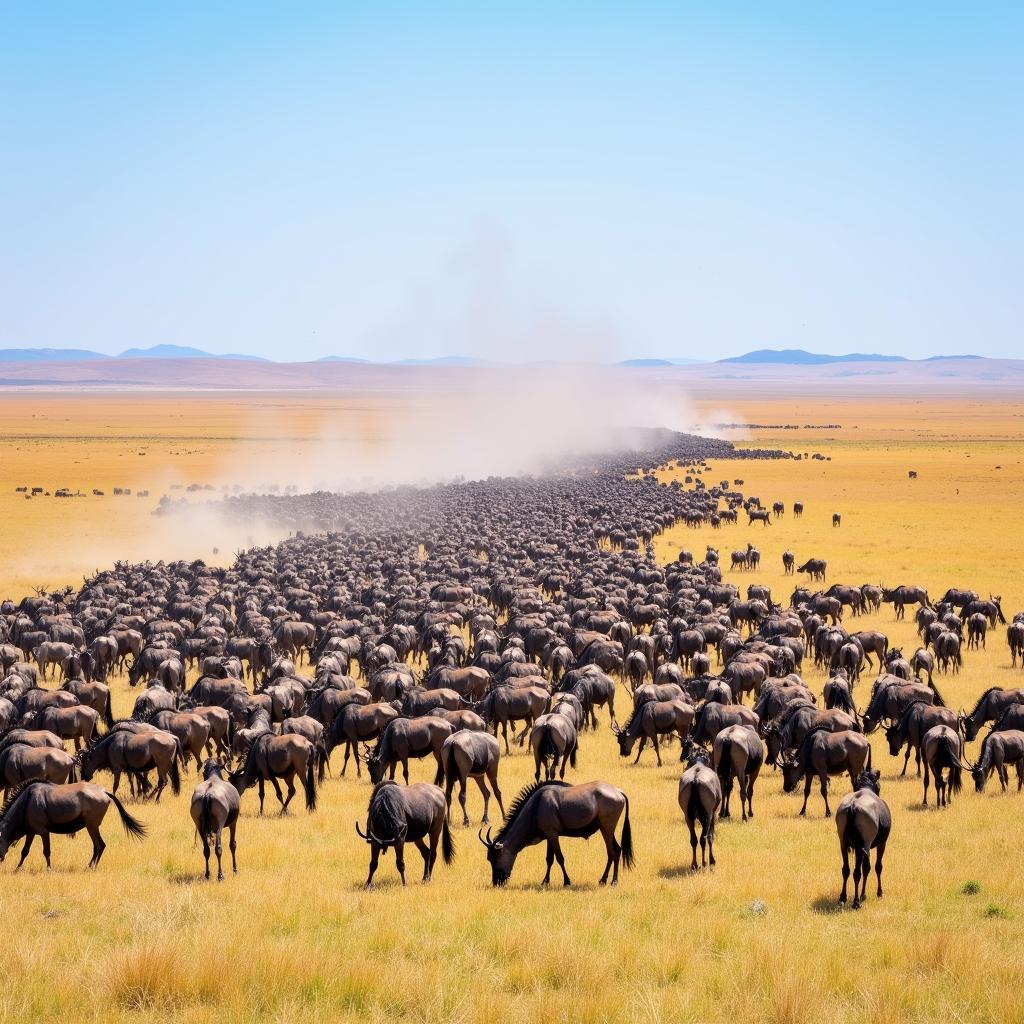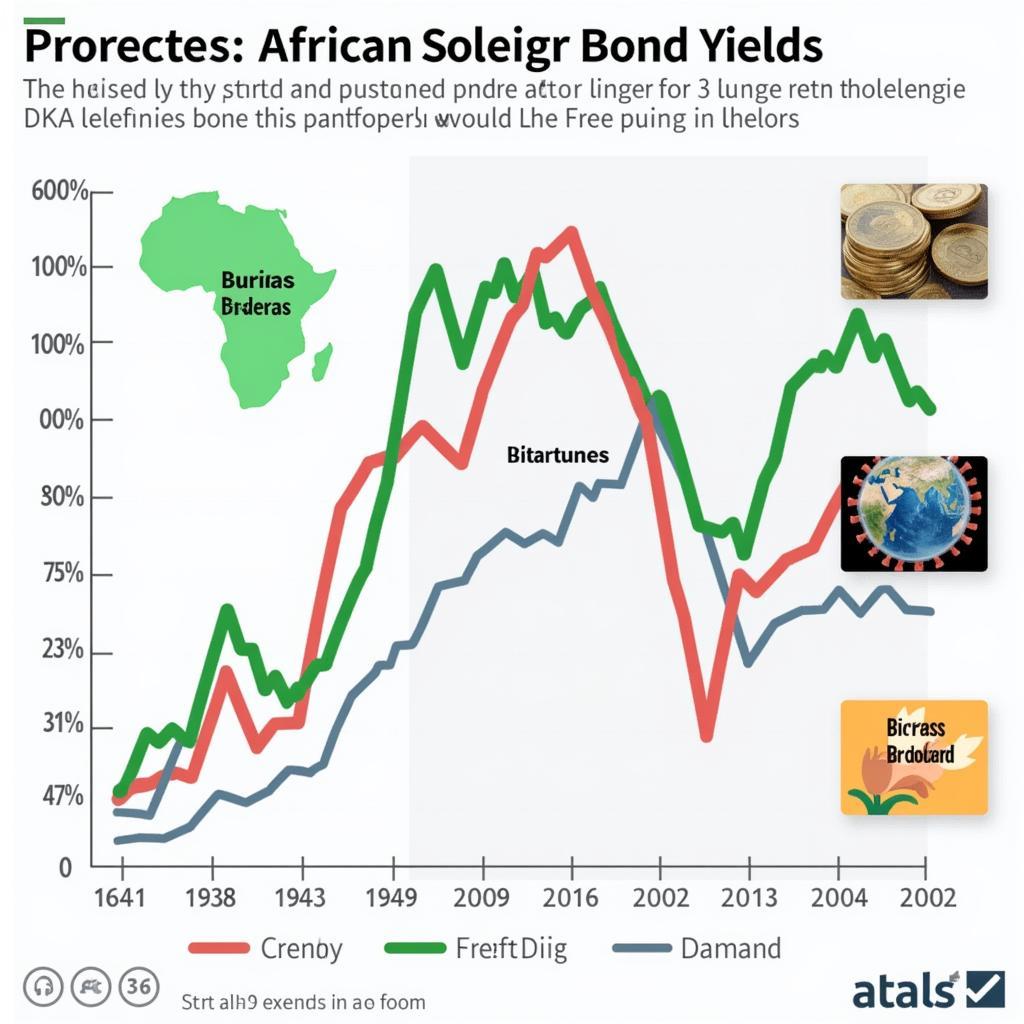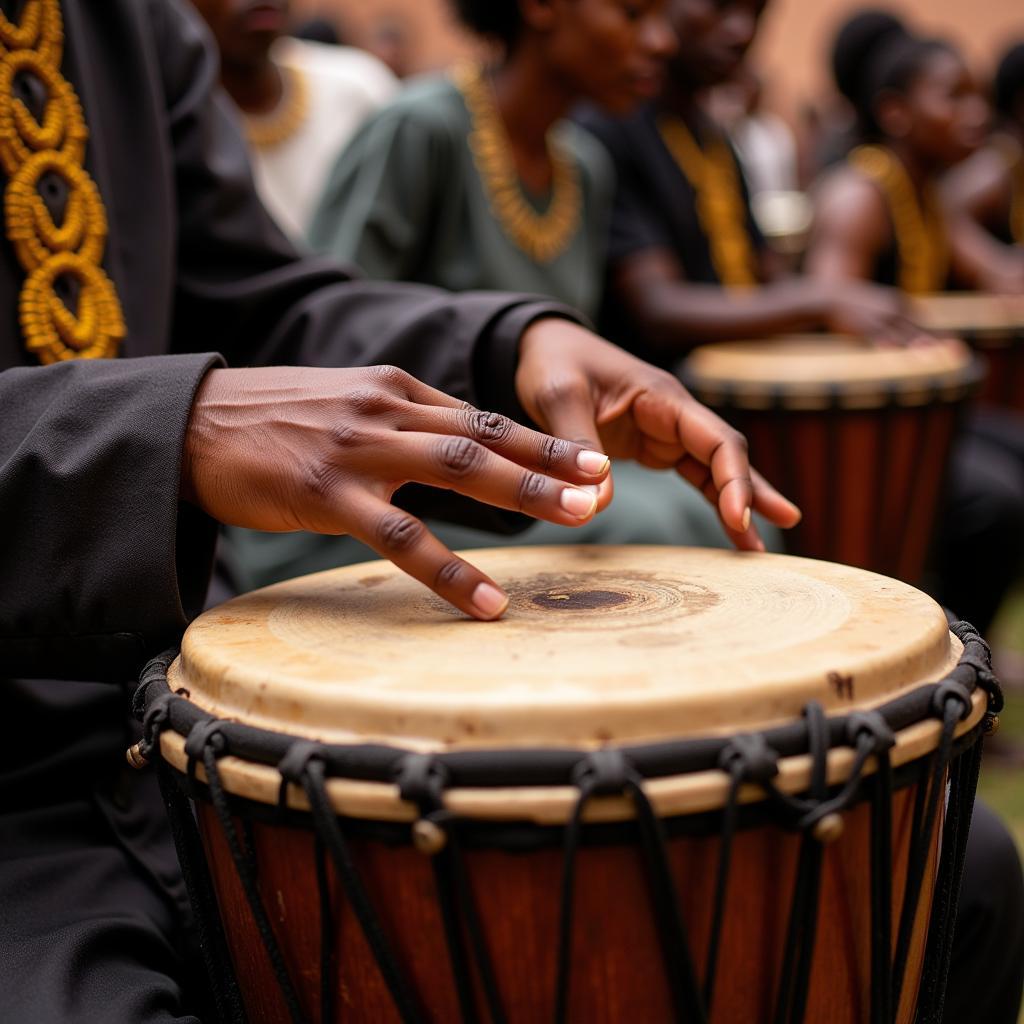The Great African Antelope Migration: A Journey of Epic Proportions
The African Antelope Migration is one of the most spectacular natural events on Earth. Witnessing thousands of antelope traversing the vast African savanna is a truly breathtaking experience. This article delves into the intricacies of these migrations, exploring their causes, routes, challenges, and the vital role they play in the African ecosystem.  Thousands of wildebeest and zebras migrating across the Serengeti plains during the great migration.
Thousands of wildebeest and zebras migrating across the Serengeti plains during the great migration.
Understanding the Drivers Behind the African Antelope Migration
Why do antelope migrate? The primary driving force behind these impressive journeys is the search for food and water. Seasonal rainfall patterns dictate the growth of fresh grasses, compelling antelope herds to follow the rains in a continuous cycle of movement. The search for suitable breeding grounds also plays a significant role.
Antelope often migrate in massive herds, sometimes numbering in the hundreds of thousands. This offers protection from predators, as a large group makes it harder for individual animals to be targeted. Think of it as a moving fortress of hooves and horns. The sheer number of antelope is also crucial for maintaining the delicate balance of the African savanna ecosystem.
You might enjoy learning more about the African savanna itself, and you can find a useful map here: african savanna map.
Following the Trails: Mapping the Antelope Migration Routes
Several distinct antelope migrations occur across Africa. Each follows a specific route shaped by geography, vegetation, and water sources. The most famous is perhaps the Great Migration of wildebeest, zebra, and other antelope in the Serengeti-Mara ecosystem, spanning Tanzania and Kenya. This annual circular migration sees over 1.5 million animals traverse vast distances, facing numerous challenges along the way.
Other notable migrations include the movements of springbok in southern Africa and the migrations of topi in East Africa. Each migration is a unique spectacle, showcasing the resilience and adaptability of these remarkable creatures.
For those interested in teaching children about the diverse African landscape, check out this resource: african landscape for kids.
Challenges and Threats to African Antelope Migrations
The African antelope migration is not without its perils. Predators, such as lions, leopards, cheetahs, and crocodiles, lie in wait along the migration routes, posing a constant threat to the migrating herds. Crossing rivers, such as the Mara River in Kenya, is another major challenge, with strong currents and lurking crocodiles claiming the lives of many antelope.
Dr. Anika Moolman, a wildlife biologist specializing in African antelope, emphasizes the importance of these migrations: “These migrations are not just a spectacle; they are the lifeblood of the African savanna. They shape the ecosystem, influencing everything from vegetation growth to predator-prey dynamics.”
Human activities, such as habitat encroachment, fencing, and poaching, also pose significant threats to the future of these migrations. Conservation efforts are crucial to ensure that these incredible natural events continue to thrive for generations to come.
The Vital Role of Migration in the Ecosystem
The African antelope migration plays a vital role in maintaining the health and balance of the African ecosystem. The grazing of vast herds helps to shape the landscape, promoting the growth of new vegetation. Their dung fertilizes the soil, enriching it with vital nutrients. The carcasses of those that perish during the migration provide food for scavengers and decompose, returning valuable nutrients to the ecosystem.
Why is the antelope migration important?
The antelope migration plays a vital role in the ecosystem by shaping the landscape, promoting vegetation growth, fertilizing the soil, and providing food for scavengers. (34 words)
What animals participate in the antelope migration?
Primarily wildebeest, zebra, and Thomson’s gazelle participate in the Great Migration, but other antelope species also undertake migrations across the continent. (33 words)
Interested in learning more about a specific antelope species? Explore the fascinating African hartebeest here: african hartebeest.
The Future of the African Antelope Migration
The future of the African antelope migration depends on continued conservation efforts. Protecting migration corridors, mitigating human-wildlife conflict, and combating poaching are crucial to ensuring the survival of these spectacular natural events. Professor Musa Keita, a leading expert in African ecology, states, “The migration is a testament to the power of nature. We must do everything we can to protect it.” You can even learn about animals related to your birth month: african birth animal by month.
Conclusion
The African antelope migration is a truly awe-inspiring phenomenon. These epic journeys, driven by the search for sustenance and survival, play a critical role in the African ecosystem. By understanding the complexities and challenges faced by migrating antelope, we can better appreciate the importance of conservation efforts to safeguard these magnificent creatures and the natural wonders they embody. The African antelope migration is a story of resilience, adaptation, and the interconnectedness of life on Earth. We must work together to ensure that this story continues to unfold for generations to come.
FAQ
- What is the main reason for the African antelope migration? The search for food and water.
- Where does the most famous antelope migration take place? The Serengeti-Mara ecosystem.
- What are some of the challenges faced by migrating antelope? Predators, river crossings, and human activities.
- What role does the migration play in the ecosystem? Shapes the landscape, fertilizes the soil, and provides food for scavengers.
- How can we help protect the future of these migrations? Support conservation efforts, protect migration corridors, and combat poaching.
- What is the significance of the Mara River crossing? A perilous but essential stage of the Great Migration.
- What are some other notable antelope migrations in Africa? Springbok migrations in southern Africa and topi migrations in East Africa.
If you need any assistance, please contact us at Phone Number: +255768904061, Email: kaka.mag@gmail.com or visit our address: Mbarali DC Mawindi, Kangaga, Tanzania. We have a 24/7 customer service team.


